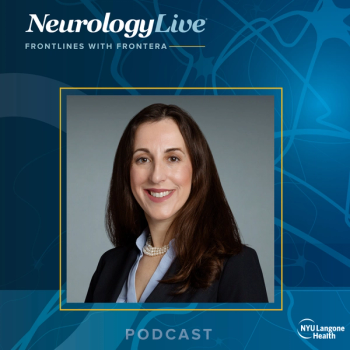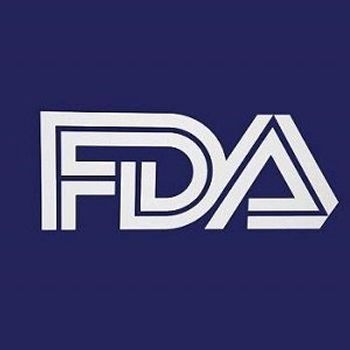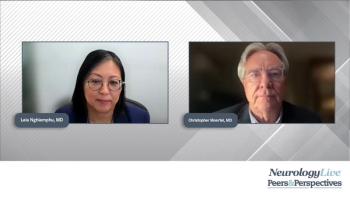
Phase 3 REST-ON Analysis Provides Insights Into Hypnagogic and Hypnopompic Hallucinations of Narcolepsy
Key Takeaways
- The REST-ON study analyzed hypnagogic/hypnopompic hallucinations in narcolepsy patients treated with once-nightly sodium oxybate, revealing a strong placebo effect and diverse hallucination types.
- The trial met primary endpoints, showing significant improvements in sleep latency, clinical global impression, and cataplexy attacks with ON-SXB treatment.
New analysis reveals insights on hypnagogic and hypnopompic hallucinations in narcolepsy patients treated with once-nightly sodium oxybate.
A newly presented post-hoc analysis of the phase 3 REST-ON study (NCT02720744)–the trial that led to once-nightly sodium oxybate’s (ON-SXB; Lumyrz; Avadel Pharmaceuticals) FDA approval–examined the incidence of hypnagogic/hypnopompic hallucination (HH) rates among treated patients with narcolepsy. Overall, the baseline HH rates were low, a strong placebo effect was observed, and the findings provided insights in the different HH types participants experienced.1
In the trial, the modified intent-to-treat (mITT) population with HH present at baseline comprised 112 participant who were randomly assigned 1:1 to either ON-SXB (week 1, 4.5 g; weeks 2-3, 6 g; weeks 4-8, 7.5 g; weeks 9-13, 9 g) or placebo. Nocturnal HH types were evaluated through 6 yes/no questions, recorded daily through diaries, whereas daytime HHs were not assessed. Coming into the trial, the baseline mean number of HH events/day was 0.60 (SD, 0.35) and 0.66 (SD, 0.35) in the ON-SXB and placebo groups, respectively.
Led by Michael Thorpy, MD, director of the Sleep-Wake Disorders Center at Montefiore, respective mean change from baseline in HH events/day to weeks 3, 8, and 13 was –0.16 (95% CI, –0.21 to –0.11), –0.28 (95% CI, –0.37 to –0.19) and –0.29 (95% CI, –0.40 to –0.18) with ON-SXB (all P <.001). In comparison, investigators recorded mean changes of –0.14 (95% CI, –0.20 to –0.08), –0.18 (95% CI, –0.26 to –0.10), and –0.24 (95% CI, –0.33 to –0.14).
Among the 12,455 HH events recorded, 7762 (62%) were hypnagogic, and 4683 (38%) were hypnopompic. Through the daily diaries, there were several different HH types identified, including (1) feeling that shadows or objects are moving/distorting (total number of events: ON-SXB: 1693; placebo: 2133), (2) feeling another presence in the room (ON-SXB: 1362; placebo: 1839), (3) feeling that you are about to be attacked (ON-SXB: 655; placebo: 1232), (4) feeling that you are flying through the air (ON-SXB: 543; placebo: 1351), (5) feeling that you will soon fall into a hole (ON-SXB: 448; placebo: 914), and (6) feeling caught in a fire (ON-SXB: 123; placebo: 152).
HHs, found in patients with various sleep disorders, are very vivid, dreamlike experiences that occur during the transition between wake and sleep. The content of the hallucinations varies, but in general it has been described as unpleasant and frightening. In 85% of the hallucinations, multiple senses are simultaneously involved: visual, auditory, and tactile. Some hallucinations appear so realistically that patients have difficulty telling them apart from real events after waking up.2
There are distinct differences between hypnagogic hallucinations and dreams: dreams typically have a storyline, whereas hypnagogic hallucinations are typically brief images or sounds. Unlike dreams or nightmares, which are typically recognized upon waking, HHs occur while a patient is still awake and may take longer to distinguish from reality.
The
In the research, data from REST-ON showed a significantly greater increase in sleep latency with ON-SXB treatment at week 3 for the 6-g dose group (8.1 vs 3.1 min, respectively; least-squares mean difference [LSMD], 4.98; 95% CI, 2.90-7.05; P <.001); at week 8 for the 7.5-g dose group (9.6 vs 3.3 min, respectively; LSMD, 6.21; 95% CI, 3.84-8.58; P <.001); and at week 13 for the 9-g dose group compared with placebo (10.8 vs 4.7 min, respectively; LSMD, 6.13; 95% CI, 3.52-8.75; P <.001).
Click here for more SLEEP 2025 coverage.
REFERENCES
1. Thorpy M, Mundt J, Ibrahim S, et al. HYPNAGOGIC/HYPNOPOMPIC HALLUCINATION TYPES AMONG PARTICIPANTS WITH NARCOLEPSY TYPE 1 FROM THE PHASE 3 REST-ON TRIAL. Presented at: 2025 SLEEP Annual Meeting; June 8-11. Seattle, WA. ABSTRACT 0834.
2. Lammers G. Chapter 22- Narcolepsy. Therapy in Sleep Med. 2012;289-296. doi:10.1016/B978-1-4377-1703-7.10022-2
3. Kushida CA, Shapiro CM, Roth T, et al. Once-nightly sodium oxybate (FT218) demonstrated improvements of symptoms in a phase 3 randomized clinical trial in patients with narcolepsy. SLEEP. 2021; zsab200. doi:10.1093/sleep/zsab200
Newsletter
Keep your finger on the pulse of neurology—subscribe to NeurologyLive for expert interviews, new data, and breakthrough treatment updates.




















